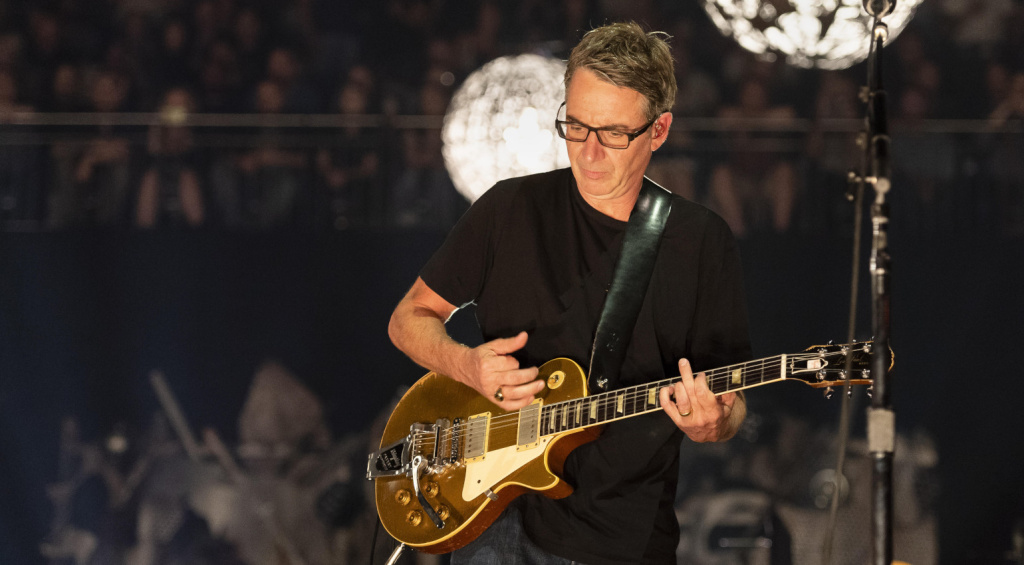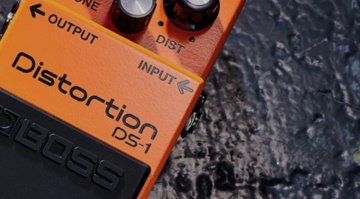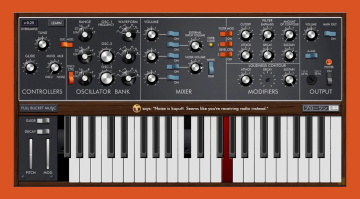Grunge Guitar: The Sound of a Generation
How Grunge Changed the World
I have a very personal connection to the sound of a grunge guitar. It was the nineties, and I was just old enough to discover MTV. I remember a poorly lit gym setting with an apathetic audience and this broken sound. When Nirvana’s “Smells Like Teen Spirit” started playing, I knew I had to learn to play it on guitar. There was no “maybe” or “let’s give it a try.” It sounded exactly how I felt. But what makes the grunge guitar sound so special?
Table of Contents
Back then, it wasn’t Cobain’s sheer skill that grabbed me – he was certainly no guitar god in the classical sense – but rather the raw emotion and hint of danger that emanated from his music. Unlike the metal bands that had influenced me earlier, the grunge greats didn’t stand out for their crazy productions, epic harmonies, or extreme solos. Grunge was much more accessible and tangible for me back then, and somehow seemed more “attainable.”
I highly recommend taking a close look at what’s actually coming out of the speakers. Even though most of the idols of that era are gone, they shaped music history in a very short time. Now, I have the chance to take a closer look at what makes the grunge guitar sound so special with you.
There are no Pretty Sounds – That’s Why the Grunge Guitar Sounded so Different

Grunge emerged as a counterpoint to the overproduced guitar excess of the ’80s. While Slash celebrated endless solos and Eddie Van Halen tapped away happily, a new sound emerged from Seattle that was somehow tired, broken, and angry. It fit Seattle like a glove. Although I loved it there, you can’t deny that it had a certain “desolation” about it.
Unlike other musical genres, grunge guitar was defined not by technical brilliance, but by attitude. Perhaps that’s why the sound resonated with so many teenagers at the time.
If you listen closely, you’ll notice that the sound isn’t “good”: the distortion is often excessive, the sound is muddy, and the playing is imprecise. But that’s exactly what made it so fascinating and accessible. It’s the sound of a generation that wasn’t interested in gloss. The guitar was the tool to express that.
The Ingredients of the Grunge Sound
So, what makes up the typical grunge guitar sound? There is no exact recipe, but certain elements always appear.
- Guitar models: Grunge guitars were rarely classy. The Fender Mustang, Jaguar, and Jazzmaster were popular, often secondhand and well-loved and battered. Inexpensive Squier models also found their place as long as they were loud enough.
- Pickups: Humbuckers in single-coil guitars and poorly soldered circuits or defective pots were common. The main thing was that it sounded angry.
- Distortion pedals: The Boss DS-1 and DS-2 were essential to every grunge guitar setup. The Electro-Harmonix Big Muff and the ProCo RAT were also popular. There were no boutique sounds, just aggressive, scratchy distortion.
- Tunings: Drop D tuning was standard for many bands of the era, as were lower-tuned instruments. This tuning immediately makes the sound heavier and grungier.
- Amps: A Marshall JCM800, a Fender Twin Reverb, or sometimes a Mesa Boogie, usually set up to sound like it desperately needed a tune-up. Clean? Rarely, and when it was, it was usually on an acoustic guitar.
In grunge, what counts is not perfection, but raw emotion: a good dose of despair paired with aggression. As it turned out, the broken and torn guitar sound often suited a wide variety of great guitarists.
The Anti-Guitar Heroes

Grunge was never about glamour. Guitarists weren’t poster boys for glossy magazines. Those who picked up a guitar did so to let off steam. The genre’s heroes weren’t virtuosos in the traditional sense, but that’s what made them so influential.
Kurt Cobain – the King of Broken Sounds
Kurt Cobain was the poster boy for grunge guitar. His Fender Mustangs and Jaguars were often modified and damaged, which probably contributed to their distinctive sound. The Boss DS-1 (and later, the DS-2) distortion pedal was the most important component of his sound. Cobain didn’t play high-gain thunderstorms; rather, he played biting, scratchy distortion that always seemed on the verge of falling apart.
His playing style was uncompromising: power chords aggressively strummed with no regard for losses. His solos were more noise than melody – yet unforgettable. He proved that you can make music history with just three chords, a broken sound, and maximum attitude.
Jerry Cantrell: Metalhead in a Flannel Shirt
Alice in Chains was always the darkest band of the grunge era, and guitarist Jerry Cantrell clearly had more metal DNA. His sound is fatter, deeper, and much more controlled than Cobain’s. His lower-tuned guitars, preferably Les Pauls and G&L models, meet Mesa Boogie amps, which hits my nerve almost perfectly.
Despite his technical skill, Cantrell remained true to grunge’s basic principle: emotion over precision. His riffs and solos have a melancholic undertone that complemented Layne Staley’s voice perfectly.
(For the record, the new stuff with William DuVall is also really awesome!)
Kim Thayil
Of all the grunge guitarists, Soundgarden’s Kim Thayil is perhaps the most experimental. He loves unusual scales, dissonant chords, and unconventional tunings. His guitar is not just an accompaniment; it’s a second vocalist that manages to hold its own against the force of nature that is Cornell. Sometimes it’s plaintive, sometimes angry, and sometimes chaotic.
Thayil’s favorite guitars are made by Guild, and his surprisingly uncluttered pedalboard is notable. More important in the Soundgarden context is how the guitar responds to the room; feedback and resonance are part of his sound. It’s a blend of jazz, doom, and Seattle, resulting in grunge guitar à la Soundgarden.
Gossard and McCready of Pearl Jam
Pearl Jam has two guitarists who complement each other perfectly. Stone Gossard provides heavy riffs and Mike McCready provides solos. Their influences range from Hendrix to punk, and you can hear it. I’ve written about the Pearl Jam sound in one of my columns: the Pearl Jam Sound.
If you listen closely to “Alive” or “Even Flow,” you’ll notice that grunge guitar was significantly developed here and made suitable for the masses, while still being acceptable for the scene.
Grunge and the Charm of Imperfection

Grunge has always been primarily about attitude, drawing heavy inspiration from punk. This was particularly evident in how musicians treated their equipment. Those who stood on stage rarely had expensive gear. Instead, they had cobbled-together setups, wildly modified guitars, and effects pedals that looked like they had just survived a house fire.
Many grunge guitarists didn’t treat their equipment like sacred relics but rather like everyday objects with corners, quirks, and history. This DIY mentality was definitely part of the calculated sound. If you don’t repair your pedal or guitar but instead smash them on the floor and keep using them, the result sounds like grunge guitar. Somehow, it all worked well – until today. If you need instructions, you can find them here: How to Destroy Your Guitar.
Grunge Guitar 2025: Retro is the New Now
Even though the hype is long gone, grunge guitar lives on. It lives on not just in the hearts of nostalgic ’90s kids, but also on stages and in bedroom studios around the globe. Young bands are once again embracing dirty tunings, sawing fuzz sounds, and down-tuned guitars. The legacy of grunge is alive and well – only the flannel shirt is optional now.
The industry has also recognized the trend, with numerous effects pedals aimed precisely at the “broken” sound of the ’90s. Whether it’s the JHS Smiley (a nod to the classic Fuzz Face) or the Electro-Harmonix Op-Amp Big Muff, those looking for a grunge guitar sound have more options than ever. Even digital all-rounders, such as the Line 6 HX Stomp, and plugins, such as those from Neural DSP, offer ready-made grunge presets.
The DIY spirit of grunge lives on. On YouTube, we can learn to recreate Cobain’s sound with inexpensive equipment. Forums discuss the best used Squier models with humbuckers. If you’re interested, you can assemble a complete grunge setup for a few hundred dollars, including a broken amplifier.
Conclusion: Loud, Broken, and Honest – the Sound That Changed Everything
The grunge guitar is more than just a sound; it’s an attitude. When guitarists were trying to outdo each other with technology, glitz, and glamour, grunge emerged as a counterweight. It was raw and angry yet strangely much more accessible.
To me, what makes grunge guitar special is not the quality of the equipment, but the intention behind it. It was about expression, not excellence.
That spirit lives on today, and it still gives me a lot of pleasure. In a world full of perfectly produced music, the grunge sound reminds me that good music doesn’t always have to be perfect. Whether on stage, in the rehearsal room, or in the studio, anyone who picks up a guitar to let off steam today often instinctively achieves the sound that made grunge great.
This article was originally published by Jan Rotring for GEARNEWS.de.
*Note: This article contains affiliate links that help us finance our site. Don’t worry – the price remains the same for you! If you buy something through these links, we receive a small commission. Thank you for your support!
2 responses to “Grunge Guitar: The Sound of a Generation”

 3,5 / 5,0 |
3,5 / 5,0 | 








An absolute piece of s#|t of music history.
I appreciate that Nirvana and Cobain have personal significance for the author, but any article on grunge that’s centred on Nirvana and Cobain and doesn’t mention Green River, Neil Young, and some other critical influences and originators, is not credible.
While Nevermind brought grunge to the masses, portraying them as the genre’s and the sound’s major architects is inaccurate and overlooks the rich, collaborative Seattle scene. Grunge emerged in the mid-1980s through pioneers like Green River aka Pearl Jam 1.0, The Melvins, and Mudhoney, who forged a raw, heavy sound blending punk’s aggression (Black Flag, The Stooges), post-punk’s experimental edge (Sonic Youth), and Neil Young’s raw, emotive guitar work. These bands, mostly rooted in Seattle’s underground scene, shaped grunge’s sludgy, introspective aesthetic long before Nirvana’s mainstream breakthrough. Bands such as Soundgarden and Tad further defined the genre’s heavy, gritty tone. Nirvana drew from these influences, combining them with melodic sensibilities inspired by The Beatles and R.E.M. to achieve commercial success.
Crediting Kurt Cobain with significant influence and prominence diminishes the collective evolution of grunge, built on a foundation of punk’s DIY ethos, post-punk’s innovation, and Young’s raw authenticity. It’s a disservice to the scene’s true pioneers and developers – and also to fans and those discovering the genre.
Let’s be honest here: Pearl Jam’s Ament and Gossard are significantly more notable and important in the history of grunge and the grunge sound than Cobain et al ever were, and it’s Pearl Jam who developed the sound and scene into something that is now as notable in music history as blues, rock, and metal. On one thing Young was very wrong, it’s better to thrive, grow and endure than to fade away – or burn out like a cheap firework.